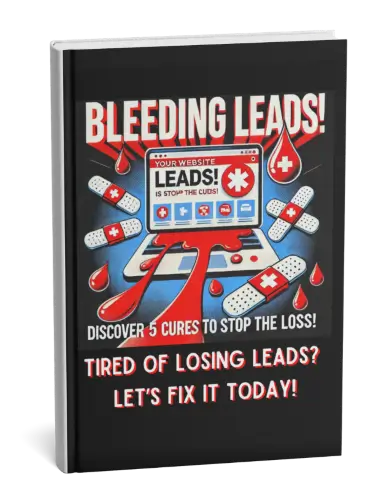
Common red flags include slow load times, confusing navigation, outdated design, broken links, and unclear messaging. If visitors leave after only a few seconds or your bounce rate is high, it’s a strong indicator that your website experience needs improvement.
Start by addressing user pain points. Simplify your layout, improve site speed, refresh your copy, and ensure your calls to action are clear. Regularly test your site on mobile devices and browsers to make sure everything loads quickly and works seamlessly.
A positive user experience builds trust and keeps visitors engaged. When your website feels intuitive and aligned with your audience’s needs, they’re more likely to stay longer, explore more pages, and take action, whether that’s signing up, donating, or buying.
“You never get a second chance to make a first impression.” – Will Rogers
Your website is more than just an online presence, it’s the first impression, the front door, and sometimes the only touchpoint a visitor has with your brand.
Whether you’re guiding people through meaningful journeys, offering healing and insight, sharing cultural knowledge, or driving discovery and innovation, your work deserves a site that welcomes visitors with clarity and confidence.
But what if your website is unintentionally making people feel lost, overwhelmed, or unsure?
When that happens, even the most passionate missions and brilliant ideas can fall flat. If your site isn’t working for you, or for your audience, it might be quietly turning people away. Here are seven signs it’s time for a refresh (and how to fix them).
The problem: Today’s visitors expect instant gratification. If your site takes longer than 3 seconds to load, most users will bounce before even seeing your homepage.
The fix:
The problem: More than half of all web traffic comes from mobile devices. If your site forces users to pinch, zoom, or scroll sideways, they’ll leave.
The fix:
The problem: When your homepage tries to say too much, it ends up saying nothing clearly. People can’t connect to your story if they don’t know what it is.
The fix:
The problem: An outdated design can send the wrong message, even when your mission is timeless. People associate modern design with relevance and trust.
The fix:
The problem: If visitors don’t know what to do next—whether it’s to donate, book a call, or read more—they’ll simply leave.
The fix:
The problem: A beautiful message still falls short if it’s not accessible to everyone. If people with disabilities can’t engage with your site, you’re leaving potential supporters behind.
The fix:
The problem: A generic website won’t reflect the richness of what you offer. Whether you’re sharing experiences, promoting wellness, or inspiring discovery, people need to feel the heartbeat behind your brand.
The fix:
Your website should feel like an invitation, not a barrier.
It should inspire curiosity, build trust, and offer a smooth path to engagement, whether that’s attending a performance, planning a visit, joining a program, or learning something new.
If your site feels off, outdated, or disconnected from who you are, it might be time for a change. Whether you make small tweaks or plan a full redesign, you deserve a website that actually works for you and welcomes the people you’re trying to reach.
Need a fresh perspective?
Let’s chat and find the simplest way to turn your website into a masterpiece that connects, converts, and reflects your mission.
“The details are not the details. They make the design.” – Charles Eames

Frances Naty Go, Founder of Goldlilys Media, transforms websites into strategic masterpieces for museums, nonprofits, health & wellness brands, higher education, life sciences, travel companies, personal brands and small businesses. With a Computer Science degree from UC San Diego, she specializes in creating digital experiences that educate, engage, and inspire action. Ready to make your digital presence unforgettable?





